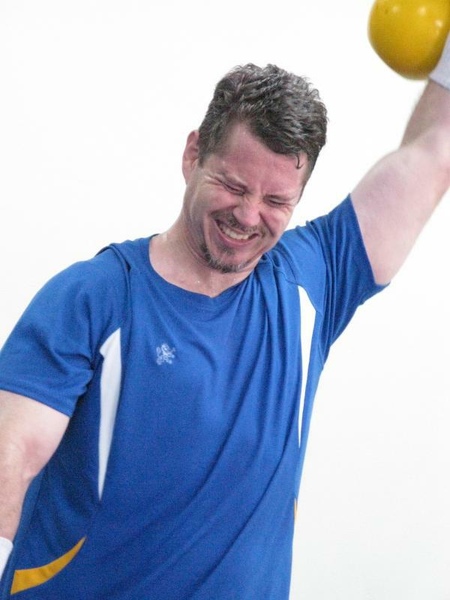 LOL. This one really snuck up on me. So I was going to do my upper body emphasis today with the kettlebell but I wasn't sure what lifts to do today. I did snatches yesterday and the day before....yada, yada. You get the picture. So on a whim I went and picked up the 32kg kettlebell.
LOL. This one really snuck up on me. So I was going to do my upper body emphasis today with the kettlebell but I wasn't sure what lifts to do today. I did snatches yesterday and the day before....yada, yada. You get the picture. So on a whim I went and picked up the 32kg kettlebell.
Last time I tried to press it was July and that was a no-go. Lifting it is on my agenda but haven't gotten around to it yet.
And LOL up it went. No problem. After I calmed down, I tried it again to see if I was seeing things but no, I pressed it again. So you know what I did then, right?
Had to see how many times I could press it. Answer: five. What about the left? Five. So want to guess what I did then?
Yep, got to see how many sets I could do. Answer: 3 sets of 5 left and 5 right. Well, almost. Set 3 stopped at 4 on the right and 3 on the left.
So I'm happy yet embarassed a little about this. For one, I should try this stuff out a little more often. I need to have more confidence in my training sometimes. This stuff really does work. Been too focused on trees instead of the forest lately.
Second, I'm not sure how I did this. I had hoped to train in a systematized fashion through sets and reps of the 20, 24, 28 and then the 32. I was going to have this great program that clients could follow, just like I did. Except now that's ruined because I didn't plan for this. Haha.
I've been reading a lot of stuff by Charles Staley and Dan John lately so that's likely the source of how I did this. The escalating density training (EDT) is no joke. You got to get some of that, if you haven't already. I did a cycle with the double 24kg of double presses and double rows for about a month. But the numbers were fairly stable the whole time. Then later I did another EDT cycle of pullups and dips that was really fun. Actually, I'm still doing that one. But it must be working in spades. I know my pullups are at an all-time high.
I'm also doing some other things that might be contributing too, but in any case, it's all working. Who can tell? I've added Optimum Nutrition 100% Whey over the last month and have been trying to follow Precision Nutrition lately. It's all good.
Anyway, I'm feeling really, really good today and hope to drag some of the things I'm learning along the way into classes. I love seeing clients get stronger while staying healthy and I always make myself the guinea pig.
So train hard and stay safe this weekend!
 I got 200 swings with the 24kg kettlebell today and it wasn't easy but it was there. I did a 1-10-1 ladder and pooped out at 4 on the down side, if you can believe that. I stopped to breath for a few seconds before cranking it back up. My lower back was aching like crazy.
I got 200 swings with the 24kg kettlebell today and it wasn't easy but it was there. I did a 1-10-1 ladder and pooped out at 4 on the down side, if you can believe that. I stopped to breath for a few seconds before cranking it back up. My lower back was aching like crazy.









